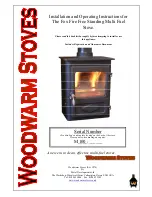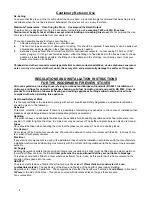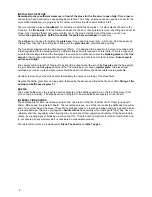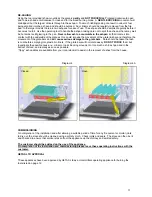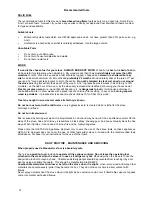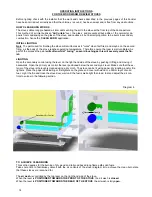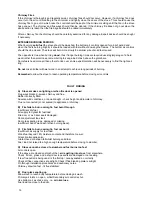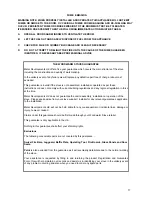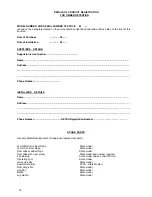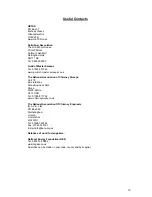
13
Twice yearly -
check the condition of the fire boards and seals and replace if deteriorated. Remove and clean
over the baffle and clear flue ways. More often if burning solid fuel. A visit from the chimney sweep will remove the
small amount of ash dust which forms in the chimney if the above instructions are adhered to.
The names and addresses of your local Approved Chimney Sweeps can be obtained from either of the following:-
Guild of Master Sweeps or The National Association of Chimney Sweeps (see page 19 for contact details).
If the stove is to be left unlit for any period
of time ensure the
air vents are left open
and the
controls and
door catches
are
well lubricated
with a high temperature/graphite based lubricant or other rust preventative.
Maintain the paint surface solely with a soft dry cloth and nothing more. The paint used is a durable heat proof
paint. It is, as a consequence, porous and is not waterproof. Before re-lighting the stove after a long period out of
use, check that
all flue ways are clear
of obstructions.
A routine should be established of :-
Daily
- run the stove
hot for a time
using the procedure as explained on pages 12 and 13, along with a surface
mounted thermometer to ensure optimum temperature is reached. This will assist in cleaning any marginal depos-
its of tar from the door glass, stove, flue and chimney internally. Check on the amount of ash in the ashpan and
empty if necessary.
Weekly
- check seals, be they rope or fire cement, for air tightness.
LUBRICATE
the
fire door catch
if needed
with a high temperature or graphite based lubricant. Ensure that the ashpit is clear of ash all the way to the rear,
remove the ashpit baffle (diagram 7) by pulling it forward and remove any ash from the air way. Clear any clinker
or nails from the grate bars and from the front and rear grate bar supports.
Ashpit Baffle
Diagram 7
Summary of Contents for Fox Fire
Page 20: ...20 30 09 09...

